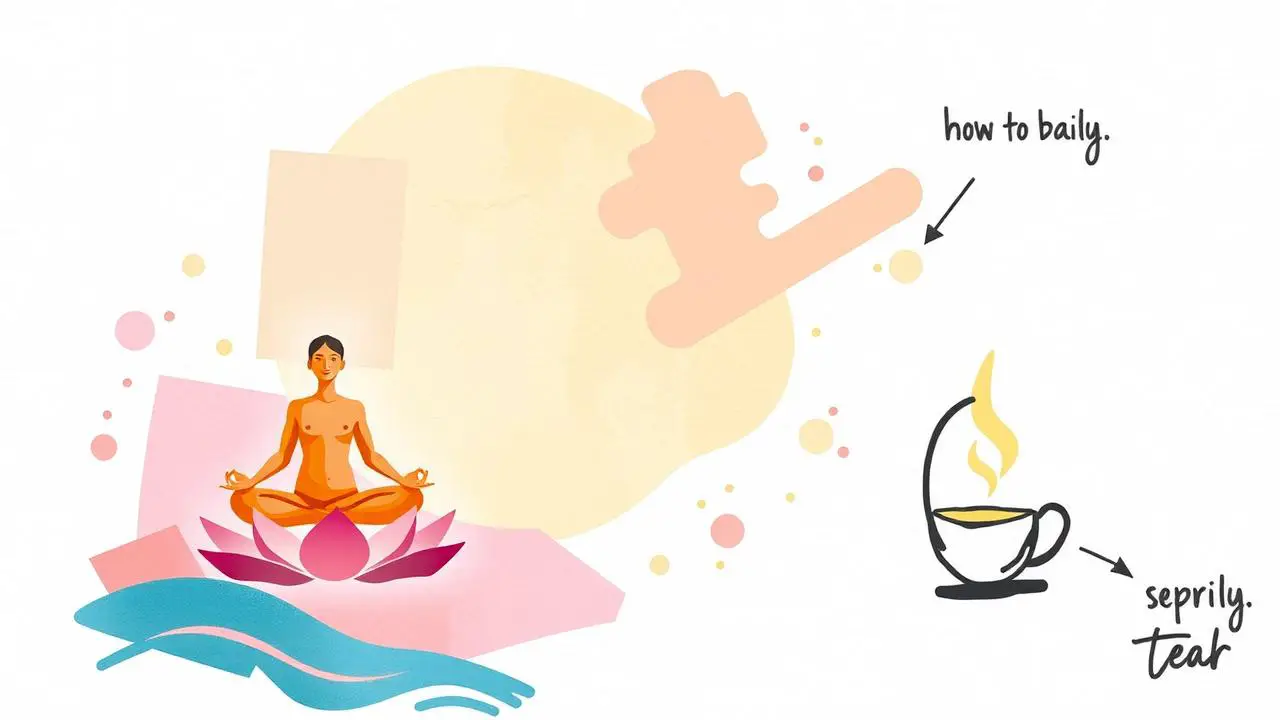Have you ever found yourself lost in thought, worrying about the future or ruminating on past regrets? It’s easy to get caught up in the chaos of daily life, but what if there was a way to cultivate a sense of inner peace and calm amidst the storm?
This is where mindfulness comes in.
Being mindful means being present and fully engaged in the current moment, without judgment or distraction. It involves paying attention to one’s thoughts, feelings, and surroundings with a sense of curiosity and openness. Mindfulness is often used as a tool for stress reduction and improving overall well-being.
Mindfulness is a term that has gained popularity in recent years, and for good reason. It’s not just a buzzword or passing trend, but rather a powerful practice that can transform the way you experience the world around you. By becoming more mindful, you can learn to live in the present moment, let go of stress and anxiety, and connect more deeply with yourself and others.
So, what does being mindfulness mean exactly, and how can you start incorporating it into your daily life? Let’s explore.
Understanding the Basics of Mindfulness
You’ll gain a deeper comprehension of the fundamentals of mindfulness by delving into this section. Mindfulness is the practice of paying attention to the present moment, without judgment or distraction, and with a sense of curiosity and openness.
There are many mindfulness techniques and exercises that can help you develop this skill, such as focused breathing, body scan meditation, mindful walking, and mindful eating. By practicing these exercises regularly, you can become more aware of your thoughts, feelings, and sensations, and learn to observe them without getting caught up in them.
This can help you cultivate greater self-awareness, emotional regulation, and resilience, and reduce stress, anxiety, and other negative emotions. The benefits of mindfulness practice are numerous and far-reaching, and can positively impact every aspect of your life.
The Benefits of Mindfulness Practice
Get ready to reap the rewards of a regular mindfulness practice – it’s like watering a plant, watching it flourish with each drop.
Mindfulness and stress reduction go hand in hand. By practicing mindfulness, you can learn to become more aware of your thoughts and emotions, and therefore, better able to manage stress. This leads to a more balanced approach to life, where stressors don’t have as much power over you.
Additionally, mindfulness has been shown to improve mental health. It can help reduce symptoms of anxiety and depression, and increase feelings of positivity and well-being. By taking time to focus on the present moment, you can learn to appreciate the small things in life and cultivate gratitude.
Mindfulness can also help improve relationships, as it allows you to be more present and attentive in your interactions with others.
So, take the time to practice mindfulness – your mind and body will thank you. Now, let’s explore techniques for cultivating mindfulness.
Techniques for Cultivating Mindfulness
Are you ready to discover simple techniques that can help you cultivate mindfulness?
Mindful journaling is a great way to start. Set aside a few minutes each day to write down your thoughts and feelings, without judgment or analysis. Simply observe them with curiosity and compassion. This practice can help you become more aware of your inner experiences and develop a deeper understanding of yourself. It can also be a helpful tool for processing difficult emotions and gaining clarity on challenging situations.
Another technique for cultivating mindfulness is mindful communication. This means being fully present and attentive when talking to others, and listening with an open mind and heart. It involves letting go of judgment and assumptions, and instead approaching each interaction with curiosity, kindness, and empathy. This practice can help you build stronger, more meaningful relationships, and develop a greater sense of connection with the people around you.
By incorporating these techniques into your daily life, you can begin to cultivate a more mindful, present, and compassionate way of being. And if you’re ready to take your mindfulness practice to the next level, the next section will explore the power of mindful breathing and meditation.
Mindful Breathing and Meditation
Engaging in mindful breathing and meditation can be a powerful way to cultivate a sense of calm and balance in your life. By focusing your attention on your breath and observing your thoughts and sensations without judgment, you can begin to develop a greater sense of awareness and presence in the present moment.
Breathing exercises can be a great way to start, as they help you to slow down and deepen your breath, which can have a calming effect on your nervous system. You might try placing one hand on your chest and one on your belly, and taking a deep breath in through your nose, feeling your belly rise and your chest expand. Then, exhale slowly through your mouth, feeling your chest and belly release.
As you begin to feel more comfortable with breathing exercises, you can also incorporate mindfulness techniques into your meditation practice. This might involve sitting quietly and bringing your attention to your breath, noticing the sensations in your body as you inhale and exhale. You might also try focusing your attention on a particular object or sound, such as a candle flame or the sound of a bell. Whatever method you choose, the key is to approach your practice with an open and curious mind, allowing yourself to be fully present with whatever thoughts or feelings arise.
With time and practice, you may find that you’re better able to manage stress and anxiety, and that you feel more connected to yourself and the world around you.
As you explore the benefits of mindful breathing and meditation, you might also consider how you can bring this sense of awareness and presence to other areas of your life. One way to do this is through mindful eating and movement, which we’ll explore in the next section.
By approaching these everyday activities with a sense of curiosity and openness, you can cultivate a greater sense of awareness and appreciation for the simple pleasures of life. So, take a deep breath, and let’s dive in.
Mindful Eating and Movement
You’re about to embark on a journey that will teach you how to savor the flavors of life, much like a painter delicately brushes colors onto their canvas. Mindful eating is a powerful tool that allows us to fully appreciate the nourishment that we’re putting into our bodies.
Take a moment to observe the colors, textures, and aromas of your food. As you slowly chew, notice the flavors that dance on your taste buds.
Mindful cooking is just as important as mindful eating. Take the time to prepare your meals with intention and care, appreciating the ingredients and the process of creating a delicious and nutritious meal.
Incorporating mindful movement into your daily routine can also have a profound impact on your overall well-being. Mindful exercise is not about pushing yourself to the brink of exhaustion, but rather about moving your body in a way that feels good and honors your limitations.
Take a walk in nature, practice yoga, or try a gentle stretching routine. Whatever form of movement you choose, do it with intention and presence. Remember, the goal is not to achieve a certain level of fitness, but rather to connect with your body and cultivate a sense of gratitude for all that it does for you.
As you begin to incorporate mindful eating and movement into your daily routine, you’ll start to notice the positive impact it has on your life. But mindfulness is not just about these individual practices; it’s about bringing this sense of presence and awareness into every aspect of your life. Let’s explore how to apply mindfulness in daily life.
Mindfulness in Daily Life
Bringing mindful awareness to everyday activities can enhance your experience of the present moment. For example, notice the sensations of the warm water and soap on your hands as you wash the dishes. Pay attention to the sound of your footsteps and the feeling of the ground beneath your feet as you walk to work. When you approach your daily tasks with mindfulness, you can cultivate a sense of gratitude for the simple moments that make up your day.
Mindfulness can also improve your relationships through mindful communication. By being fully present and attentive to your loved ones, you can deepen your connections and create a more fulfilling relationship. Practicing mindfulness in your relationships can also help you to listen more deeply, understand more fully, and respond with greater empathy.
With mindfulness, you can create a more harmonious and compassionate world around you. Now, let’s explore how to overcome common obstacles to mindfulness.
Overcoming Common Obstacles to Mindfulness
Don’t let common obstacles like distractions, judgment, and resistance prevent you from experiencing the benefits of being present in each moment. Mindfulness at work can help you manage stress, increase focus, and improve productivity. However, it’s easy to get distracted by emails, meetings, and deadlines.
To overcome this, try setting aside a specific time each day to practice mindfulness. This can be as simple as taking a few deep breaths before starting a task or using a mindfulness app during your lunch break.
Mindfulness for stress reduction can also be challenging because it requires us to confront our thoughts and emotions instead of avoiding them. It’s natural to judge ourselves or resist uncomfortable feelings, but this only reinforces the stress response. Instead, try acknowledging your thoughts and emotions without judgment.
This can be done through meditation, journaling, or simply taking a moment to check in with yourself throughout the day. Remember, mindfulness is a practice and it takes time to develop. Be patient and compassionate with yourself as you navigate the obstacles and reap the benefits of being present.
As you continue to explore the benefits of mindfulness, it’s important to have resources and further reading to support your practice.
Mindfulness Resources and Further Reading
Congratulations on making it this far in your mindfulness journey! Overcoming common obstacles to mindfulness can be tough, but you’ve shown resilience and dedication to improving your mental well-being. Now, let’s talk about some mindfulness resources and further reading that can help you continue on your path towards inner peace.
If you’re a parent, you may be interested in exploring mindful parenting resources. This approach helps you tune into your child’s needs and emotions, while also being present and attentive to your own thoughts and feelings. It’s a great way to foster a strong bond with your child and create a peaceful home environment.
In the workplace, mindfulness training can help reduce stress and increase productivity. Many companies now offer mindfulness programs to their employees, recognizing the benefits not only for individual mental health, but also for the success of the business as a whole. If you’re interested in incorporating mindfulness into your work life, consider seeking out these resources or talking to your employer about implementing a program. With the right tools and support, you can continue to cultivate mindfulness in all areas of your life.
How Is Mindfulness Incorporated into Social Work Practice?
Mindfulness in social work involves incorporating mindfulness techniques into therapy sessions to help clients manage stress and improve their overall well-being. Social workers can use mindfulness practices to help clients develop greater self-awareness and emotional regulation, leading to better outcomes in therapy.
Conclusion
Congratulations! You now have a basic understanding of what mindfulness means and how it can benefit your life. Remember, mindfulness is not a destination but a journey, and it takes practice to cultivate.
You may encounter challenges along the way, such as distractions or negative thoughts, but with patience and persistence, you can overcome them.
Think of mindfulness as a garden that you need to tend to. Just as you need to water and care for your plants to help them grow, you need to nurture your mindfulness practice to help it flourish.
And just like a garden, mindfulness can bring beauty and peace to your life. So, take some time every day to tend to your mindfulness garden, and watch as it blossoms into a beautiful oasis of calm and clarity. You’ve got this!




